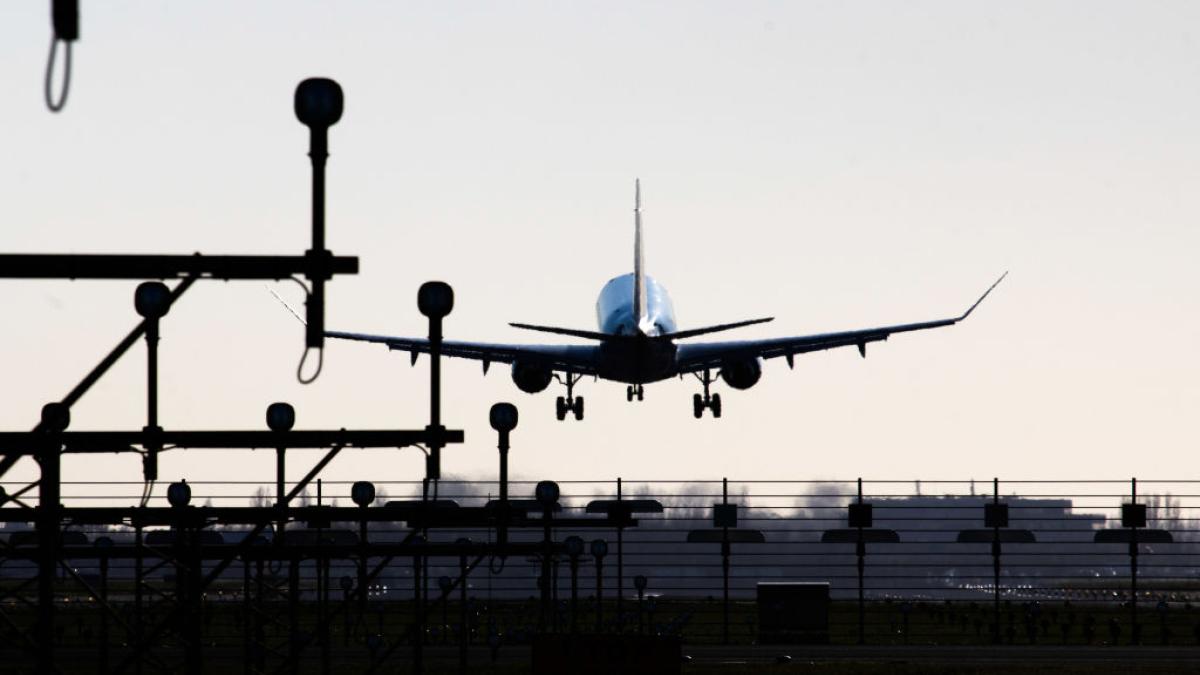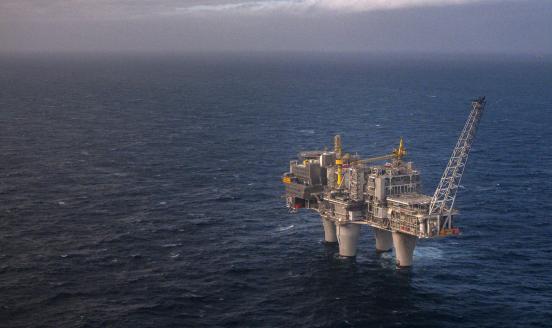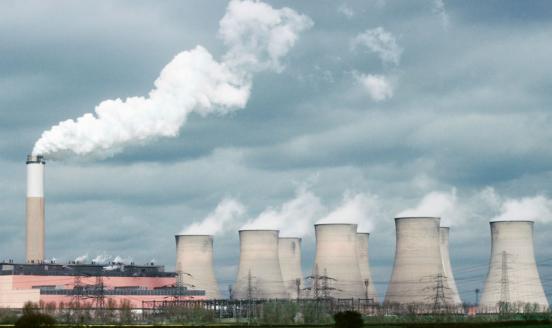The struggle to cut emissions from international aviation and shipping
Three possible policy pathways could lead to improvement and systemic change in the aviation and maritime sectors.

In combination, international aviation and shipping contribute about 3 percent of greenhouse gases put into the atmosphere each year. Emissions in 2022 from international aviation were 436 million tonnes of carbon dioxide equivalent, while from international shipping the figure was 706 Mt/CO2eq – about the same as Germany (746 Mt of CO2eq) 1 See International Energy Agency webpages on aviation and international shipping, https://www.iea.org/energy-system/transport/aviation and https://www.iea.org/energy-system/transport/international-shipping. . If within-country emissions are also counted, the figures rise significantly 2 In 2018, total shipping and aviation each emitted about 1,000 Mt/CO2eq, which combined exceed Russia’s annual emissions (IMO, 2020). .
So far, there has been a persistent failure to reduce these emissions. In the European Union, where overall emissions have dropped by 30 percent since 1990, emissions from international aviation and shipping increased by more than in any other economic sector – by 29 percent and 26 percent respectively (Figure 1).
A fundamental obstacle in dealing with shipping and aviation is the labelling of much of their emissions as ‘international’ under United Nations Framework Convention on Climate Change (UNFCCC) reporting. This accounting feature, a legacy of the Kyoto Protocol, means governments have less of an incentive to decarbonise the two sectors. They are not obliged to include clear emissions reduction pathways for the international portion of aviation and shipping in their Nationally Determined Contributions (NDCs) 3 NDCs are countries’ self-defined national climate pledges under the Paris Agreement, detailing what they will do to help meet the global goal to limit the temperature rise to 1.5°C, adapt to climate impacts and ensure sufficient finance to support these efforts. . Furthermore, as they operate across borders, they escape national carbon-pricing schemes. The current accounting model, combined with the lack of a global carbon price, makes it very hard to impose the polluter-pays principle on international aviation and shipping.
Aviation and shipping companies also receive special tax treatment. Neither sector pays value-added tax or excise duties on fuel (unlike the railway and road transport sectors). Their special tax status gives them a competitive advantage over other modes of transportation. This is particularly evident in aviation, where transporting passengers is five times more emissions-intensive than by train 4 160 versus 33 grammes of CO₂ equivalent per passenger kilometre. , but buying a flight in Europe is cheaper than the equivalent train ticket in 70 percent of instances (Doll et al, 2020; Greenpeace, 2023). Companies in the two sectors also tend to profit from low corporate taxes, as they have more freedom to register anywhere in the world than other types of businesses. In maritime shipping for example, the majority of companies are registered in jurisdictions such as Liberia and Panama 5 See Offshore Energy, ‘SeaIntel: Container Shipping Industry Favours Tax Havens’, 8 November 2017, https://www.offshore-energy.biz/seaintel-container-shipping-industry-fa…. , which have minimal corporate income tax rates 6 John D. McCown, ‘$34.7B Container Shipping Net In 4Q22’, LinkedIn, 3 April 2023, https://www.linkedin.com/pulse/347b-container-shipping-net-4q22-john-d-…. (McCow, 2023).
Recent developments and consensus building
Emissions reductions for international aviation and shipping are agreed internationally. On 7 July 2023, the International Maritime Organisation (IMO) agreed a new worldwide strategy on emission reduction targets for shipping (IMO, 2023). For the first time, the agreement set targets for 2030 (an emissions reduction of between 20 percent and 30 percent compared to 2008) and 2040 (between 70 percent and 80 percent), with an overall goal of reaching net-zero emissions by, or around, 2050. This represents a tremendous step forward compared to the IMO’s 2018 strategy, which aimed to only halve emissions by 2050.
However, even the more ambitious targets fall short of putting the sector on a trajectory aligned with limiting global warming to 1.5°C above pre-industrial levels and would deplete the sector’s 1.5°C carbon budget (12 gigatonnes of CO2eq) by as early as 2032 (Bonello et al, 2023; Comer and Carvalho, 2023 7 See also Faig Abbasov and Chiara Mingozzi, ‘Europe Goes from Leader to Laggard in Tackling Shipping’s Climate Impact’, Transport & Environment, 27 April 2023, https://www.transportenvironment.org/discover/europe-goes-from-leader-t…. ).
International aviation meanwhile has established the Carbon Offsetting and Reduction Scheme for International Aviation (CORSIA) and has a ‘Long-Term Global Aspirational Goal’ of net-zero emissions by 2050, agreed within the International Civil Aviation Organization (ICAO, 2022). This represents a raising of the level of climate ambition for international aviation but is even less 1.5°C-aligned than the IMO deal as it does not provide any intermediary targets.
Setting distant aspirational goals with no clear pathway on how to achieve them risks depleting the sectoral carbon budget, as it incentivises delaying of investments and regulation needed to limit global warming. A clear decarbonisation pathway is particularly important for these two sectors as ships and airplanes have long asset-replacement cycles, meaning that the emissions performance of ships and planes built now will be locked-in for decades.
Moreover, the new IMO and ICAO targets are not legally binding 8 Some measures to achieve the commitments, however, can be binding, including the Energy Efficiency Existing Ship Index (EEXI) in shipping. However, these would reduce shipping emissions by only about 1 percent by 2030. See Bryan Comer and Francielle Carvalho, ‘IMO’s Newly Revised GHG Strategy: What It Means For Shipping And The Paris Agreement’, International Council on Clean Transportation Blog, 7 July 2023, https://theicct.org/marine-imo-updated-ghg-strategy-jul23/. and do not attribute specific emission-reduction goals to individual states, raising doubts about whether they will ever be achieved.
The European Union has taken some steps to bring aviation and shipping emissions within the scope of its climate laws. Intra-EU flights are covered by the EU emissions trading scheme (ETS) 9 After an initial attempt to include all flights to and from EU airports. See Fiona Harvey, ‘EU freezes airlines carbon emissions law’, The Guardian, 12 November 2012, https://www.theguardian.com/environment/2012/nov/12/eu-airline-emission…. . From January 2024 the EU will extend the ETS to cover CO2 emissions from all large ships (of 5,000 gross tonnage and above) entering EU ports, regardless of the flag they carry. The system will gradually cover up to half of emissions from voyages starting or ending outside the EU and all of the emissions generated between two EU ports (European Commission, 2023).
The EU has also adopted laws setting limits on the carbon intensity of shipping fuels and promoting alternatives (the so-called FuelEU Maritime initiative) and is working to finalise a similar rule on aviation fuels (RefuelEU Aviation). 10 See Council of the EU press release of 25 July 2023, https://www.consilium.europa.eu/en/press/press-releases/2023/07/25/fuel…, and European Parliament Legislative Train Schedule, https://www.europarl.europa.eu/legislative-train/package-fit-for-55/fil….
The way forward
The frameworks under which international climate agreements work for aviation and maritime shipping thus remain inadequate. In this context, three possible policy pathways could lead to improvement.
First the UNFCCC should change its accounting method to allocate international emissions to the countries of departure and arrival of ships and planes. One option would be to split the emissions of the trips equally between the countries of departure and arrival, similar to what the EU does between its member states.
Second, new binding measures should be incorporated into international treaties, and the reach and scope of existing measures should be extended. For example, the IMO is working on a new GHG Fuel Standard on carbon intensity limits on fuels for ships, which has the potential to have a great impact in curbing emissions. If incorporated in the International Convention for the Prevention of Pollution from Ships (MARPOL), it would also be legally binding.
Third, introducing compulsory minimum excise duties worldwide on the fossil fuels used by the two industries would represent a source of public revenues that could be used to finance climate action, and would be an incentive for the companies operating in aviation and maritime shipping to speed-up their transitions away from fossil fuels 11 Another option, though politically harder to achieve, would be to design an international carbon price for the two sectors, directing the revenues to their decarbonisation and to poor countries in need of climate finance. In shipping alone, the World Bank estimates that carbon revenues could reach $1 trillion to $3.7 trillion by 2050, or $40 billion to $60 billion per year (Dominioni and Englert, 2022). See also Pascal Saint-Amans, ‘Tax for climate finance should start with shipping’, First Glance, 3 July 2023, Bruegel, https://www.bruegel.org/first-glance/tax-climate-finance-should-start-s…. . Otherwise, a climate tax on flight tickets similar to that envisaged in France 12 Clea Caulcutt, Giorgio Leali and Paul de Villepin, ‘Macron calls for an international taxation deal to finance climate efforts’, Politico, 23 June 2023, https://www.politico.eu/article/france-emmanuel-macron-calls-for-intern…. – with revenues invested in climate mitigation and adaptation policies – could be designed easily to be both progressive and climate friendly.
The EU is already in a leading position. The bloc should persist in its regional efforts to decarbonise the two sectors. Finding alliances with other countries or blocs might be a powerful and faster way to push for systemic change than waiting for concerted action at the UN. More than 40 percent the global shipping fleet transits through the EU every year. For the EU plus the US, Japan, South Korea and Australia, the figure is 75 percent (Mingozzi et al, 2022). Therefore, regional action can be the main driver of international change, as has already been seen with other EU rules on shipping that prompted adoption at the UN level 13 Examples include CO2 reporting requirements for ships, sulphur standards and the ban on single-hull tankers. See Aoife O’Leary and Faig Abbasov, ‘Let’s end the debate: putting international shipping into the ETS is clearly legal’, Euractiv, 28 January 2021, https://www.euractiv.com/section/shipping/opinion/lets-end-the-debate-p…. . For civil aviation, global manufacturing is dominated by two companies – Airbus and Boeing – registered in Europe and the US. An agreement on new production standards and alignment of targets and incentives for sustainable aviation fuels would be incredibly impactful on the global stage.
Stricter energy efficiency requirements applied to ship and airplane design and construction, engine technologies and operations 14 A 20 percent reduction in the speed of ships could reduce CO2 emissions and air pollution by 34 percent (Reynolds, 2019). can also help reduce emissions.
Better incentives for companies to use sustainable fuels should be prioritised over carbon intensity target-setting. Carbon-intensity targets risk persuading companies to use only marginally less-polluting fuels (such as LNG for the shipping industry; Clark et al, 2020), which would also result in stranded assets.
On international aviation, the first phase of ICAO’s CORSIA carbon offsetting scheme ends in 2026. If by then the scheme proves to be insufficient, the EU should apply the ETS to all flights departing from or landing in its airports – in the same fashion as done for international shipping. The EU tried this before, in 2012, but ultimately decided against it in the face of an unfavourable reaction from the US and other countries. Though doing so now will still be politically difficult, the international context is more favourable than in 2012 (as shown by the success in incorporating international shipping into the ETS).
The fact that alternative fuels for long-distance air travel are not yet available at scale cannot be a justification for failing to price the sector’s externalities correctly. A price of €50/tonne of CO2eq could increase the cost of a return ticket from Berlin to New York by about €100 15 The shortest distance by air between Berlin and New York is 6,385 kilometres and emissions are assumed to be 160 grammes of CO₂ equivalent per passenger kilometre. , or 16 percent of the average ticket price in economy class. This would have the twofold effect of dissuading some international travel and raising about €3.5billion per year in revenues 16 In 2021, the European Environment Agency estimated the value of EU-attributable emissions from international aviation to be 69,754 kilotonnes of CO₂ equivalent emissions. , which could be channelled to scale up research into sustainable fuels.
The EU already plays a fundamental role in shaping the debate and pushing climate action – a role that it is often under-appreciated – but there is scope to do even more in international aviation and shipping emissions, especially through cooperation with the United States and other major allied economies.
The author is grateful for the excellent comments received from Jacob Armstrong, Francielle Carvalho, Bryan Comer, Stephen Gardner, Ben McWilliams, Lucio Pench, Niclas Frederic Poitiers, Pascal Saint-Amans and Simone Tagliapietra.
Bonello, J.-M., S. Parker, T. Smith, D. Smith, A. Lewis and F. Rangel Villasana (2023) Science Based Target Setting For The Maritime Transport Sector, Science Based Targets Initiative, available at https://sciencebasedtargets.org/resources/files/SBTi-Maritime-Guidance.pdf
Clark, N., B. Comer, N. Pavlenko, Y. Zhou and D. Rutherford (2020) ‘The Climate Implications of Using LNG as a Marine Fuel’, Working Paper 2020-02, International Council On Clean Transportation, available at https://theicct.org/sites/default/files/publications/Climate_implications_LNG_marinefuel_01282020.pdf
Doll, C., C. Brauer, J. Köhler and P. Scholten (2020) Methodology for GHG Efficiency of Transport Modes, European Environment Agency, available at https://www.eea.europa.eu/publications/rail-and-waterborne-transport
Dominioni, G. and D. Englert (2022) Carbon Revenues From International Shipping: Enabling an Effective and Equitable Energy Transition, The World Bank, available at https://openknowledge.worldbank.org/handle/10986/37240
Greenpeace (2023) Ticket Prices of Planes vs Trains - a Europe-Wide Analysis, available at https://greenpeace.at/uploads/2023/07/report-ticket-prices-of-planes-vs-trains-in-europe.pdf
ICAO (2019) The World of Air Transport in 2019, International Civil Aviation Organisation, available at https://www.icao.int/annual-report-2019/Pages/the-world-of-air-transport-in-2019.aspx
ICAO (2022) ‘Resolution A41-21: Consolidated Statement of Continuing ICAO Policies and Practices Related to Environmental Protection - Climate Change’, International Civil Aviation Organisation, available at https://www.icao.int/environmental-protection/Documents/Assembly/Resolution_A41-21_Climate_change.pdf
IMO (2020) Fourth IMO Greenhouse Gas Study, International Maritime Organisation, available at https://www.imo.org/en/ourwork/Environment/Pages/Fourth-IMO-Greenhouse-Gas-Study-2020.aspx
IMO (2023) 2023 IMO Strategy on Reduction of GHG Emissions from Shipping, International Maritime Organisation, available at https://wwwcdn.imo.org/localresources/en/OurWork/Environment/Documents/annex/MEPC%2080/Annex%2015.pdf
Mingozzi, C., F. Abbasov, J. Armstrong, M. Suher Carthy and V. Simon (2022) ‘Less Is More: Regional Shipping Policy and Global Decarbonisation’, Briefing, November, Transport & Environment, available at https://www.transportenvironment.org/wp-content/uploads/2022/11/COP27_world_country_MRV.pdf



